Tools & Materials 
Screwdriver
Gloves
Neon circuit tester
Channel-type pliers
Masking tape
Replacement heating element or thermostat
Replacement gasket
Pipe joint compound
The most common problem with an electric water heater is a burned-out heating element. To determine which element has failed, turn on a hot water faucet and test the temperature. If the water heater produces water that is warm, but not hot, replace the top heating element. If the heater produces a small amount of very hot water, followed by cold water, replace the bottom heating element.
If replacing the heating element does not solve the problem, then replace the thermostat, found under convenient access panels on the side of the heater.
Remember to turn off the power and test for current before touching wires.
 HOW TO REPLACE AN ELECTRIC THERMOSTAT
HOW TO REPLACE AN ELECTRIC THERMOSTAT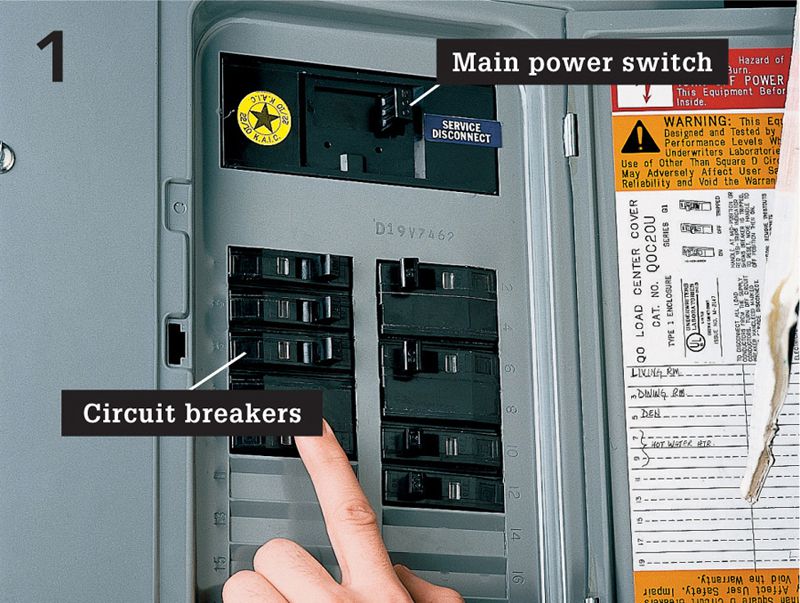
Turn off power at main service panel. Remove access panel on side of heater, and test for current.
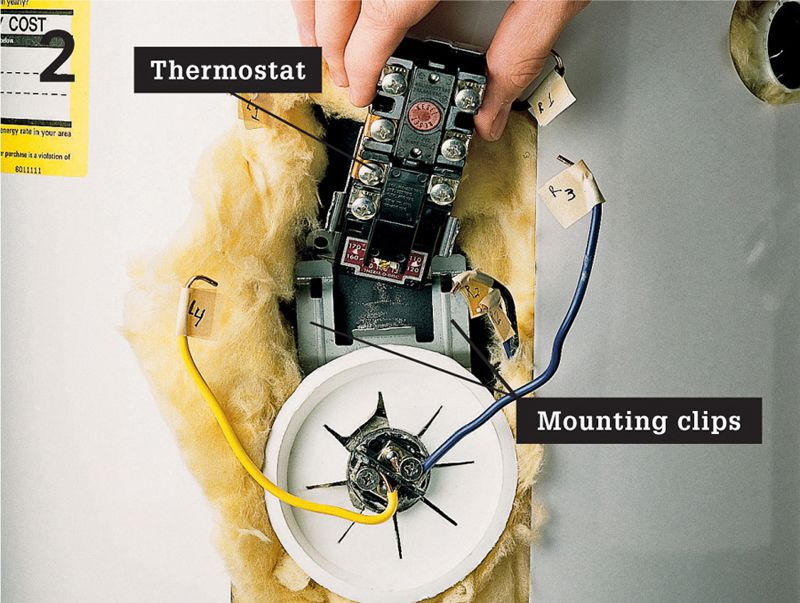
Disconnect thermostat wires, and label connections with masking tape. Pull old thermostat out of mounting clips. Snap new thermostat into place, and reconnect wires.
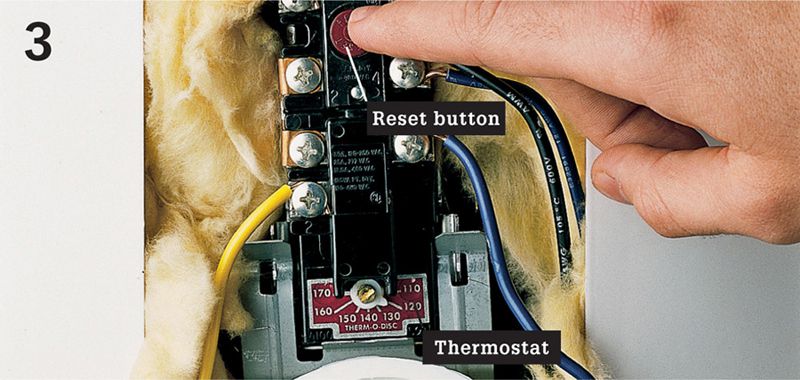
Press thermostat reset button, then use a screwdriver to set thermostat to desired temperature. Replace insulation and access panel. Turn on power.
 HOW TO REPLACE AN ELECTRIC HEATING ELEMENT
HOW TO REPLACE AN ELECTRIC HEATING ELEMENT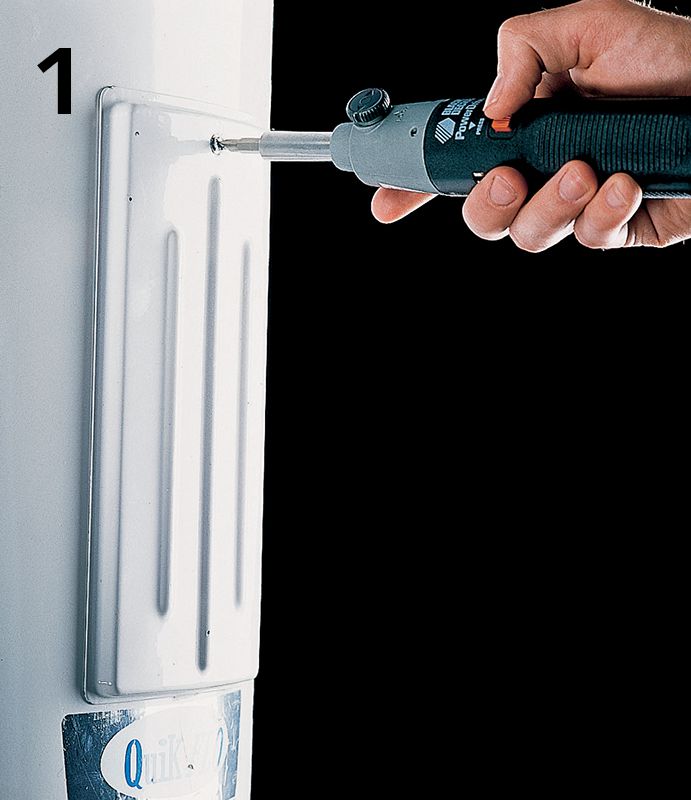
Remove access panel on side of water heater. Shut off power to water heater (page 390, step 1). Close the shutoff valves, then drain tank (page 540, step 2).
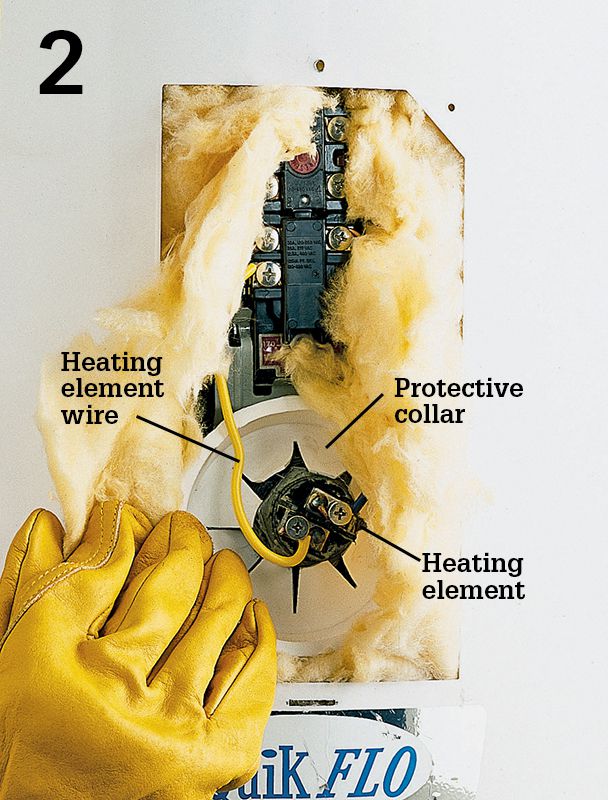
Wearing protective gloves, carefully move insulation aside. Caution: Test for current, then disconnect wires on heating element. Remove protective collar.

Unscrew the heating element with channel-type pliers. Remove old gasket from around water heater opening. Coat both sides of new gasket with pipe joint compound.
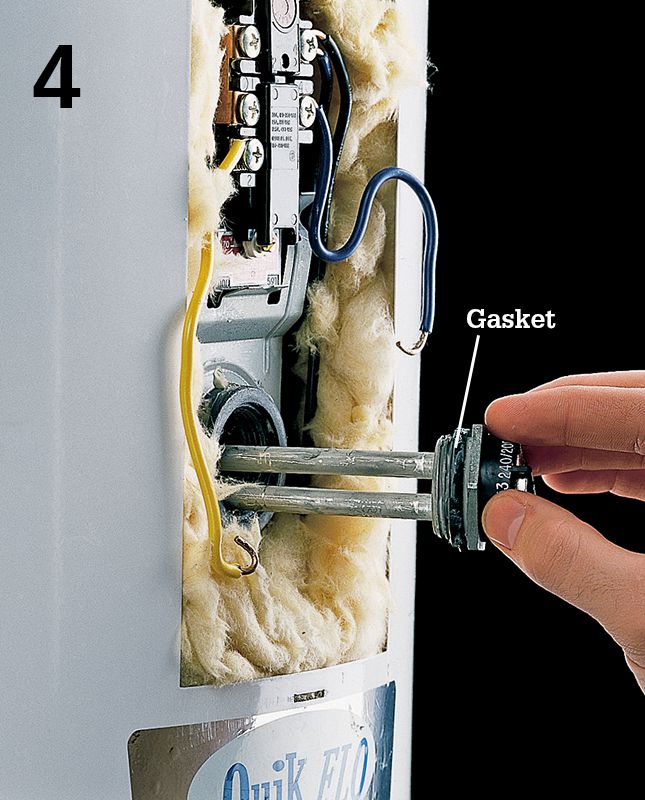
Slide new gasket over heating element, and screw element into the tank. Tighten element with channel-type pliers.
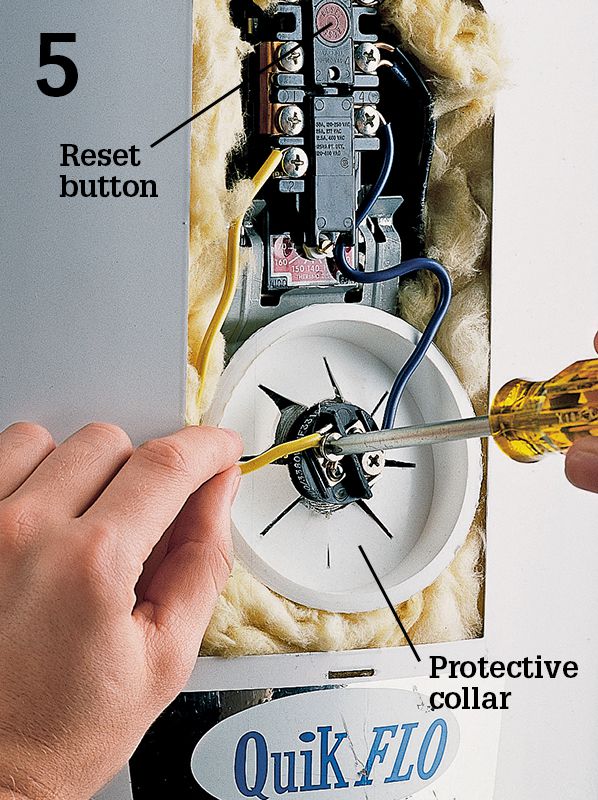
Replace protective collar, and reconnect all wires. Turn on hot water faucets throughout house, then turn on water heater shutoff valves. When tap water runs steadily, close faucets.
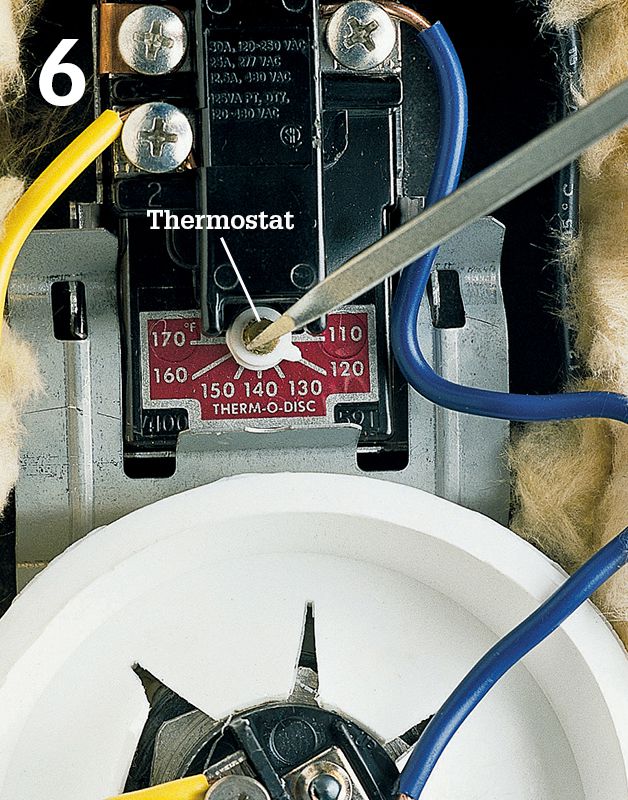
Use a screwdriver to set thermostat to desired temperature. Press thermostat reset buttons. Fold insulation over thermostat, and replace the access panel. Turn on power.